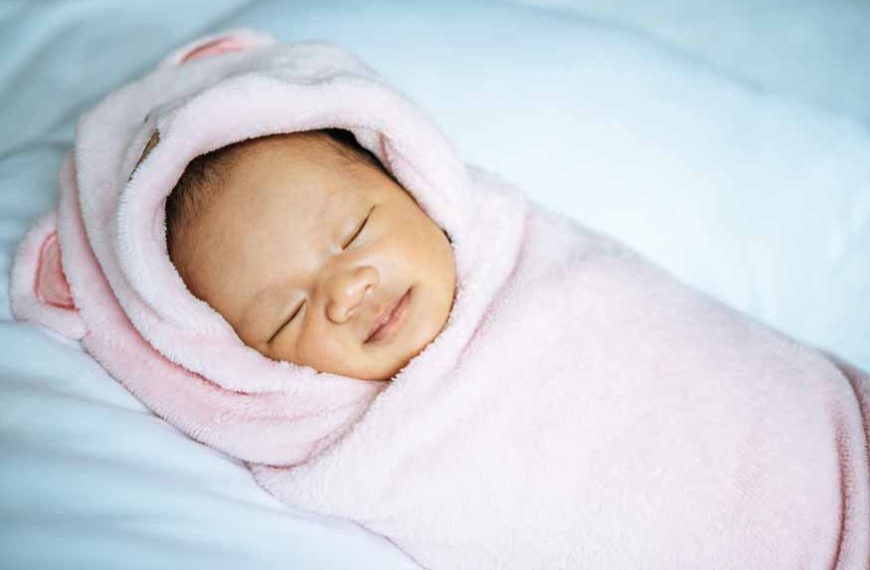Welcoming a new addition to the family brings unparalleled joy, but it also introduces a myriad of questions and concerns for parents, especially when it comes to ensuring their little one sleeps safely and comfortably. One essential item that has gained popularity in recent years is the baby sleeping bag. Thankfully, we don’t have to worry about how it works because here is a sleeping bag guide that will answer all your questions. So, without further ado, let us delve into the universe of the baby sleep bag and how we can lull our little ones into a peaceful slumber by using them.
What is a Baby Sleep Bag?
Before we go any further, the most important thing to know is what exactly is an infant sleeping bag. A baby sleep bag, also commonly known as a wearable blanket or sleep sack, is a specially designed sleepwear garment for infants and toddlers. Its primary purpose is to provide a safe and comfortable sleep environment, offering an alternative to traditional blankets. Unlike blankets that can be easily kicked off or pose a suffocation risk if pulled over a baby’s face, the infant sleeping bag is a secure and practical solution for ensuring a baby sleeps soundly.
Key Features of the Baby Sleep Bag
To understand why the baby sleep bag delivers on its promise of a peaceful sleep for your toddlers, here are key features of the baby sleep bag:
- Design:
- Material:
- Tog Rating:
- Size and Fit:
Baby sleep bags typically feature a sleeveless design with armholes and a zippered or buttoned closure. This design allows for ease of movement while preventing the risk of fabric covering the baby’s face, avoiding any irritation or disturbance during sleep time.
Sleep bags are crafted from soft and breathable materials, such as cotton or muslin, to ensure the baby stays comfortable throughout the night. The material should be gentle on the baby’s delicate skin, promoting a cozy and restful sleep.
The tog rating of a sleep bag indicates its thermal resistance or warmth. Tog ratings vary, and parents should choose a sleep bag with an appropriate tog rating based on the ambient room temperature and the season.
It’s crucial to select the right size sleep bag for your baby to ensure a proper fit. An ill-fitting sleep bag may compromise its safety and effectiveness. The sleep bag should be snug around the neck and chest but allow enough room for the baby to move their legs freely.
When Should Your Babies Use Baby Sleep Bags?
Introducing the baby sleeping bag to your infant’s sleeping schedule is something every parent should know about.
- From Birth:
- Transition from Swaddling:
- During Sleep Training:
It’s generally safe to start using a baby sleep bag from birth. Ensure the sleep bag is appropriately sized to prevent any excess fabric that could pose a risk.
As babies grow, they may outgrow the swaddling stage. A sleep bag serves as a natural transition, providing the comfort of being enclosed without restricting movement.
When you begin sleep training your baby to sleep independently, a sleep bag can help create a consistent sleep environment, making the transition smoother.
How to Use a Baby Sleeping Bag Effectively:
As adults, we know how to slide into a sleeping bag without much fuss and can zip ourselves up before sleeping. But with toddlers, they require assistance every step of the way, right from picking the right sleeping bag to zipping up for the night. So here is a guide on how to use sleeping bag for baby effectively:
- Choose the Right Size:
- Prepare the Sleep Bag:
- Dress Your Baby Appropriately:
- Place Your Baby in the Sleep Bag:
- Zip or Button the Sleep Bag:
- Check for the Right Tog Rating:
- Monitor Room Temperature:
- Regularly Inspect the Sleep Bag:
Before you begin, make sure you have selected the appropriate size sleep bag for your baby. A well-fitting sleep bag should have a snug neckline and chest, with enough room for the baby to move their legs comfortably. Avoid using a sleep bag that is too big, as excess fabric can pose safety risks.
Lay the sleep bag flat on the bed or changing table, ensuring it is fully unzipped or unbuttoned. Check for any loose threads or potential hazards that might cause discomfort or harm to your baby.
Dress your baby in lightweight, breathable clothing suitable for the room temperature. Avoid overdressing or underdressing to maintain a comfortable sleep environment. Ensure your baby’s arms are free and not restricted by any additional layers.
Gently pick up your baby and guide their arms through the armholes of the sleep bag. Make sure your baby’s shoulders and arms fit comfortably through the openings. Lay your baby down in the sleep bag with their back against the bed or crib.
Once your baby is positioned correctly in the sleep bag, securely fasten the zipper or buttons. Pay attention to the closure at the neckline, ensuring it’s snug but not too tight. This prevents the sleep bag from slipping down and covering your baby’s face.
Confirm that you have chosen a sleep bag with an appropriate tog rating for the room temperature. This helps prevent your baby from getting too hot or too cold during the night.
Maintain a comfortable room temperature between 68°F to 72°F (20°C to 22°C) to complement the sleep bag’s thermal properties. Adjust the baby’s clothing and the tog rating of the sleep bag based on seasonal changes.
Periodically check the sleep bag for any signs of wear, tear, or damage. Ensure that zippers and buttons are functioning correctly. If you notice any issues, replace the sleep bag promptly to maintain a safe sleep environment for your baby.
Benefits of the Baby Sleeping Bag
Using a baby sleeping bag offers a range of benefits for both infants and their parents. Here are some key advantages:
- Safety Assurance:
- Regulated Body Temperature:
- Establishing Sleep Routine:
- Ease of Use:
- Transition from Swaddling:
- Reduced Disturbances:
- Versatility for Travel:
- Comfort for Varied Sleep Positions:
- Prevention of Overheating:
The foremost benefit of using a baby sleeping bag is the enhanced safety it provides. Unlike traditional loose blankets, sleep bags eliminate the risk of suffocation or entanglement, ensuring that your baby sleeps in a secure environment.
Baby sleeping bags are designed to help regulate a baby’s body temperature during sleep. They provide warmth without overheating, thanks to their breathable materials and adjustable tog ratings suitable for different seasons.
Sleep bags contribute to the establishment of a consistent infant sleeping bag pattern that promotes sleep. By associating the sleep bag with bedtime, babies recognize the cue for sleep, making it easier for parents to instill healthy sleep habits.
Putting a baby in a sleeping bag is a straightforward process, simplifying the bedtime routine for parents. With zippered or buttoned closures, sleeping bags offer convenience for diaper changes during the night without disturbing the baby’s sleep too much.
As babies outgrow the swaddling stage, sleeping bags provide a natural transition. They allow for freedom of movement while still offering the enclosed feeling that many infants find comforting.
Unlike blankets that can be easily kicked off or tangled, sleep bags stay securely in place throughout the night. This reduces disturbances, ensuring that your baby remains covered and warm, promoting a longer and more restful sleep.
Baby sleeping bags are portable and easy to pack, making them ideal for travel. Whether you’re staying overnight at a friend’s house or embarking on a family vacation, the sleep bag provides a consistent sleep environment for your baby.
Sleep bags accommodate various sleep positions, allowing babies to move their legs freely while keeping the upper body covered. This versatility supports a more comfortable and natural sleeping experience.
With proper tog ratings based on room temperature and season, baby sleeping bags help prevent overheating, a factor linked to an increased risk of sudden infant death syndrome (SIDS). This ensures a safe sleep environment for your little one.
Investing in a baby sleep bag is a practical and safe choice for parents seeking to provide their little ones with a secure and comfortable sleeping environment. By following this sleeping bag guide, you can confidently and safely use a baby sleeping bag and provide your little one with a secure and comfortable sleeping experience.
For more such interesting blogs, Visit EuroKids

















